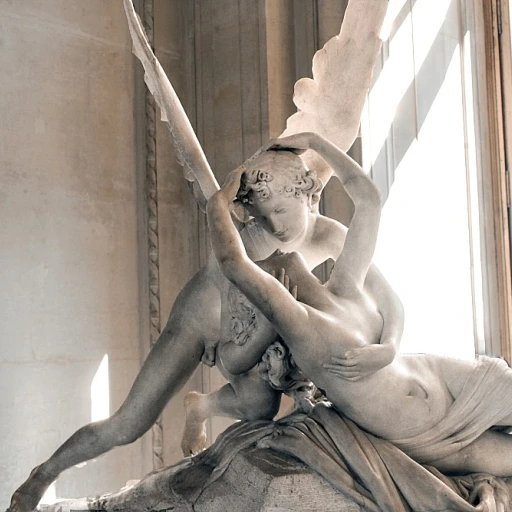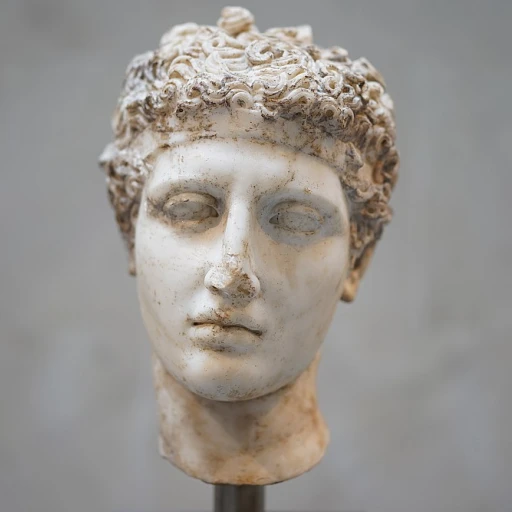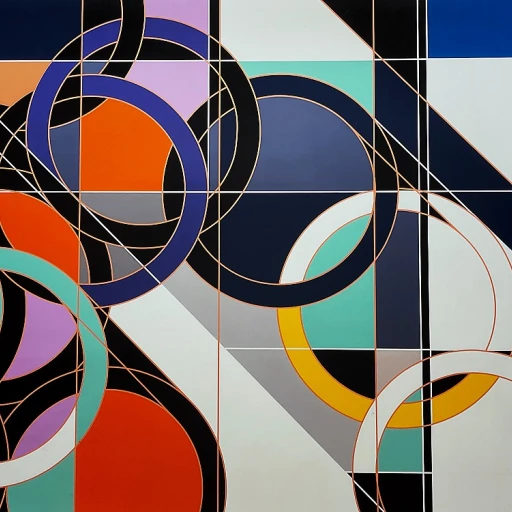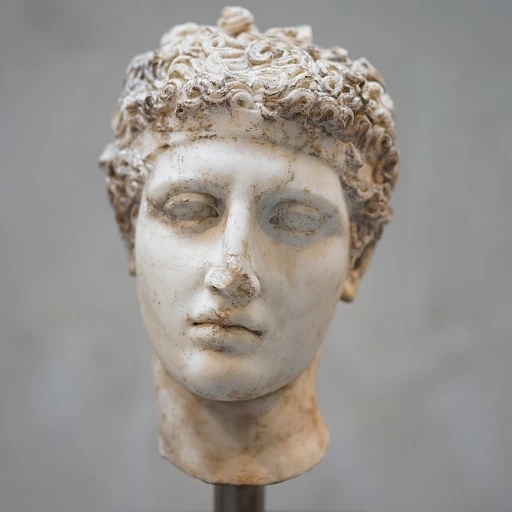The Timeless Appeal of Sacred Art
The Enduring Magnetism of Religious Masterpieces
Sacred art has long captivated collectors and enthusiasts alike, drawing them into a realm where the divine and the artistic intersect. The allure of religious paintings, such as those depicting scenes from the life of Jesus Christ, the Virgin Mary, and other biblical figures, has been sustained throughout centuries. These works transcend mere visual appeal to offer profound spiritual insights and cultural significance.
The timeless appeal of sacred art is further enhanced by the rich symbolism imbued within each piece. Biblical paintings, from "The Conversion of Saint Paul" to "The Return of the Prodigal Son," often carry deep theological and philosophical meanings, inviting viewers to look beyond the canvas and contemplate the mysteries of faith. Artists like Rembrandt, whose oil canvases bring biblical narratives to life, and other Italian painters have left a remarkable legacy with their deft use of color and composition.
Collecting these works not only offers an emotional and spiritual connection, but they also frequently come with historical narratives that can enhance their allure. Provenance, the history of a painting's ownership, adds layers of intrigue and value to the artwork, making pieces such as "The Virgin of the Rocks" or the "Supper at Emmaus" even more desirable. Art collectors seek out these stories, often finding an academic or poetic frame that echoes their personal beliefs or heritage.
In today’s art market, sacred art remains a sought-after category, with multiple units available for sale, ranging from high-priced masterpieces to affordable prints. The gallery spaces across the globe often feature religious compositions, from canvas to oil panel units, ensuring these treasures are accessible to a wide audience. Whether for spiritual upliftment or investment, the appeal of sacred art seems as eternal as its divine origins.
Symbolism and Interpretation in Biblical Paintings
Deciphering the Meaning Behind Religious Motifs
Delving deep into the realm of sacred art unveils a tapestry of symbolism and interpretation that has enthralled art lovers for centuries. Religious paintings are not merely visual representations; they are narratives woven through biblical references and rich symbolism. One key component is the depiction of Jesus Christ, often portrayed in moments of divine interaction, such as the conversion of Saint Paul or the return of the prodigal son. These biblical paintings serve not just as religious conveyance but also as a portal into the societal and cultural beliefs of the time. In the works of the Italian painter, we see interpretations of the Virgin Mary and John the Baptist that illuminate spiritual themes. Leonardo da Vinci's "Virgin of the Rocks" is a masterpiece where symbolism speaks volumes – the placement of figures, the use of light and shadow, and even the flora choice are all laden with meaning. William Blake's art bible interpretations brought a unique perspective, infusing visionary elements that challenged traditional views. His depictions in oil on canvas stirred thought on spirituality and human existence. Similarly, Rembrandt’s biblical scenes, such as the "Supper at Emmaus," transcend time, with his unique approach to oil panel techniques. These masterpieces hold more than aesthetic appeal; they offer an exploration of faith. Understanding these works' symbolic nature enriches their appreciation, inviting art connoisseurs to decode their profound meanings. In determining the unit price of these exquisite artworks, one must consider their intricate symbolism that contributes to their value. The price of canvas and oil-panel renditions can vary significantly based on the artist and the era. Multiple interpretations of biblical events, such as Christ’s teachings or the Virgin’s divine representation, cater to a diverse audience, enhancing the works' collectability and appeal. Moreover, these paintings’ presence in a religious gallery exudes a solemn yet captivating aura. For connoisseurs and collectors alike, religious paintings offer an entry into sacred stories. Each piece is more than just a canvas; it’s a reflection of faith, society, and the artist’s worldview. By exploring the symbolic significance, one gains a deeper appreciation for the divine artistry woven into every brushstroke.Masterpieces and Their Creators
Masterful Creations of the Divine
The world of sacred art is an intricate tapestry woven by the genius of countless artists who have sought to capture the divine essence on canvas. Among the most revered masterpieces are those that depict biblical narratives and figures, capturing moments so profoundly significant that they beckon admirers into a deep contemplation of faith and humanity. These works serve as a testament to not only the creativity of their creators but also the enduring allure of the holy subjects they portray. Renowned artists such as Leonardo da Vinci, with his "The Last Supper," and masterpieces like "The Virgin of the Rocks," illustrate scenes from the Bible with a depth and vitality that transcends time. The oil canvas painstakingly crafted by these Italian painters conveys a sense of holiness, inviting viewers to reflect upon the profound themes of the Christian faith. These religious paintings often highlight key figures such as Jesus Christ, the Virgin Mary, and Saint John the Baptist, imbuing each brushstroke with symbolism and spiritual significance. In addition to da Vinci, other artistic giants such as Rembrandt have left an indelible mark on religious artwork, with pieces like "The Return of the Prodigal Son." These biblical paintings often explore themes of repentance, forgiveness, and divine grace, offering a visual interpretation that enriches the textual accounts found within the Bible. Such works act as a unit of measure for the skillful blend of color, light, and shadow, capturing the emotional depth of their sacred subjects. William Blake's interpretations of biblical themes further demonstrate the diverse approaches artists have taken to convey religious narratives. His visionary works, infused with dramatic intensity and intricate detail, reflect complex theological concepts through a unique artistic lens. The journey of these masterpieces to today's audiences often involves a rich history of provenance, providing an additional layer of intrigue and fascination. From gallery to private sale, the preservation and transfer of these artworks often hinge on their documented lineage, which, in turn, can significantly affect their unit price. With sacred art remaining a cornerstone of artistic and spiritual exploration, it continues to captivate collectors and art enthusiasts alike. For those interested in delving deeper into these divine creations, here's a fascinating exploration of coastal creations that may complement your art collection.The Role of Provenance in Sacred Art
The Provenance Journey of Sacred Art
In the world of sacred art, the story behind a piece can be as captivating as the imagery it portrays. Provenance—the tracing of a work's history—is essential in assessing its authenticity and value. This journey not only authenticates but also imbues the artwork with a rich narrative that extends its influence beyond mere aesthetics. When dealing with paintings of biblical significance, such as "The Supper at Emmaus" or "The Return of the Prodigal Son," understanding provenance can profoundly alter our perception and appreciation. Knowing the lineage of a painting, whether it passed through the hands of religious institutions or private collections, adds layers of meaning that bridge the divine to the earthly. The provenance of famous religious works, like depictions of Jesus Christ or the Virgin Mary, plays a crucial role in their valuation and sale in galleries. Considerations such as the original oil panel or canvas medium, earlier restoration efforts, or documentation of past ownership can significantly influence the narrative and, consequently, the price. For example, understanding the history of masterpieces like "The Conversion of Saint Paul" or "The Walking on Water" not only enhances their historical context but also impacts the art markets. A documented provenance can often explain why unit prices soar when these religious paintings go to sale at prominent auction houses, underscoring their esteemed position within the canon of biblical paintings. Moreover, the unit's connection to notable figures or prior exhibitions can considerably affect both its cultural status and financial worth. The impact of an Italian painter like Leonardo da Vinci or William Blake on religious art has made works such as "The Virgin of the Rocks" or "Christ in the Storm on the Sea of Galilee" some of the most sought-after creations, both spiritually and monetarily. Exploring sacred art's provenance is a voyage through history, spirituality, and the complex world of art collection. It is a testament to the ability of these majestic works to transcend time, connecting us to a past filled with the divine narratives of the Bible and the personal interpretations of the artists who brought them to life on oil canvas.The Intersection of Faith and Art
The Fusion of Spirituality and Aesthetics
Sacred art has long served as a bridge between the heavenly and the earthly realms, capturing profound spiritual themes in tangible forms. Artworks that portray religious figures such as Jesus Christ or events like the Last Supper have a unique ability to inspire and evoke contemplation. Art is a visual language that transcends the written word, and nowhere is this more apparent than in religious paintings. For instance, the use of light and shadow in biblical paintings symbolizes divine illumination and moral contrasts. One might admire how Italian painters of the Renaissance depicted the Virgin Mary on an oil canvas, where her serene expression conveys both vulnerability and strength. This confluence of faith and art is not confined solely to visual splendor. The intricate symbolism embedded within these works invites viewers to engage with biblical narratives on a deeper level. Understanding the transformation of Saint Paul or the poignant return of the Prodigal Son requires not only an artistic appreciation but also a knowledge of the spiritual messages conveyed. While the intersection of faith and art is deeply personal, it also has universal appeal. Religious paintings, whether they portray Jesus Christ walking on water or the dramatic Conversión of Saint Paul, possess a unit price that reflects their historical significance and spiritual resonance. As viewers, we are drawn not just to the visual beauty but to the transcendent themes these works represent. By examining masterpieces like Leonardo da Vinci's works or Rembrandt's interpretations, we gain insight into the creative process that brings these narratives to life. Their compositions become a gallery of spiritual exploration, inviting both connoisseurs and collectors alike to appreciate not only the price but the profound insights each painting offers a faithful homage to the stories of the bible and the divine.Investing in Sacred Art
Understanding the Value of Sacred Art
Investing in sacred art is not merely a financial decision; it is a journey into the rich tapestry of history, culture, and spirituality. The allure of religious paintings, such as those depicting Jesus Christ or the Virgin Mary, lies in their ability to transcend time, offering both aesthetic pleasure and spiritual reflection.
When considering an investment in this realm, one must appreciate the unit price of these works, which can vary significantly based on several factors. The provenance of a piece, as discussed earlier, plays a crucial role in determining its value. A painting with a well-documented history, perhaps linked to a famous religious event or figure like Saint Paul, can command a higher price.
Factors Influencing Investment
- Artist Reputation: Works by renowned artists, such as the biblical paintings of Rembrandt or the masterpieces of Leonardo da Vinci, often have a higher value due to their historical significance and artistic mastery.
- Medium and Technique: The medium, whether it be oil on canvas or an oil panel, can also affect the price. An oil canvas by an Italian painter known for their depiction of biblical scenes, such as the Creation of Adam, is highly sought after.
- Condition and Restoration: The condition of the artwork, including any restoration efforts, can influence its market value. A well-preserved piece of art, like a print or canvas from the Renaissance, is often more desirable.
- Market Trends: The art market is dynamic, with trends affecting the sale and purchase of religious artworks. Keeping abreast of these trends is essential for making informed investment decisions.
Strategic Acquisition
For those new to the world of sacred art investment, starting with smaller, less expensive works can be a prudent strategy. As one becomes more familiar with the market, acquiring more significant pieces, such as a depiction of the Last Supper or the Return of the Prodigal Son, becomes a viable option.
Ultimately, investing in sacred art is about more than financial gain. It is about owning a piece of history, a unit of cultural heritage that reflects the profound intersection of faith and art. Whether it's a painting of John the Baptist or a scene from the Bible, each piece offers a unique glimpse into the divine.




-teaser.webp)




